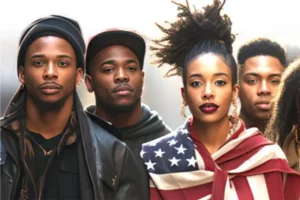It’s no secret that when it comes to funding, HBCUs are given the short end of the stick. From federal policies and campaign promises that hardly ever come through, to stark differences in state funding between HBCUs (Historically Black Colleges and Universities) and PWIs (Predominately White Institutions), our schools are struggling in the area of finances, which impacts our students and quality of education. While systemic inequality plays a significant role in the state of Black universities, it is important to recognize that donations from alumni are the lifeline of any college or university, and that the absence of giving from Black alumni can be felt across many HBCU campuses.
According to Forbes, the average rate of alumni donations at HBCUs is nearly 10% and the rate has remained constant over the last few decades. This is nowhere near the hundreds of thousands spent during the homecoming season.
Only four HBCUs have an alumni giving rate exceeding 30%: Claflin University (47%), Spelman College, Bennett College, and Lane College (all exceeding 35%). Two HBCUs had the lowest giving rate of 2%.
So why aren’t our alumni giving back? It’s not that we don’t value and appreciate the education and life lessons gained from our coveted HBCUs.
One known reason is the wealth disparity between Black professionals and families and our white counterparts. Giving back can be difficult, especially for young Black professionals working to solidify their careers and financial stability. The wealth disparity is also caused by the dramatic differences in student loan debt between Black students and their white counterparts. According to Education Data Initiative, the average Black student owes around $25,000 more than white students. Forty-eight percent of Black students owe 12.5% more than they borrowed, and Black student borrowers are most likely to struggle financially due to student loan debt, with 29% paying $350 or more in monthly payments.
Other reasons include small fundraising infrastructures, miseducation about state funding for HBCUs, and many HBCU graduates saying they simply haven’t been asked to donate.
Why is it important to donate to HBCUs?
There’s a common issue amongst HBCUs all over the nation (besides financial aid office mayhem), and that is lack of property and deteriorating infrastructure. Recently, Howard University, a well-known private HBCU, made headlines after a month-long protest from students over unfit living conditions such as black mold, dust, and flooding. If even our most popular HBCUs are struggling to provide safe and up-to-date living conditions for students, we can only imagine the conditions of our lesser-known and less funded Black universities.
With many of our HBCUs in inner-city areas, it is difficult and almost impossible for expansion to take place without adequate funding. Even Black universities with more than enough surrounding space to build Black college towns, like Prairie View A&M University, do not have the funding to do so.
How do we increase the Black alumni giving rate at HBCUs?
Education about philanthropy and the importance of supporting Black universities should begin while students are in school. If the importance of giving back as an alumni is fervently taught while our students are still enrolled in school, we can create a culture where financially supporting HBCUs is the norm and highly valued within our communities.
Many Black alumni are under the impression that their monetary contributions matter less than the hefty donations given by celebrities such as Oprah Winfrey, Tom Joyner, Denzel Washington, etc. This cannot be further than the truth. Consistent donations from HBCU communities are crucial to the continued success and prosperity of Black universities and colleges. Even if payments are as little as $20 a month, every dollar plays a role in the growth of HBCUs.
It’s time to challenge ourselves and our community members to support and nurture the institutions that have given so much to Black communities and Black culture. These universities provide a safe learning environment and life lessons that will follow Black students long after graduation. Investing in the future of the Black community as we pursue equity and racial progress in America starts by investing today in the institutions we hold near and dear to our hearts.
Never underestimate the power of the Black dollar. Invest your money where it can benefit your community. Investing in our students IS investing in the future of Black America, as a whole.










